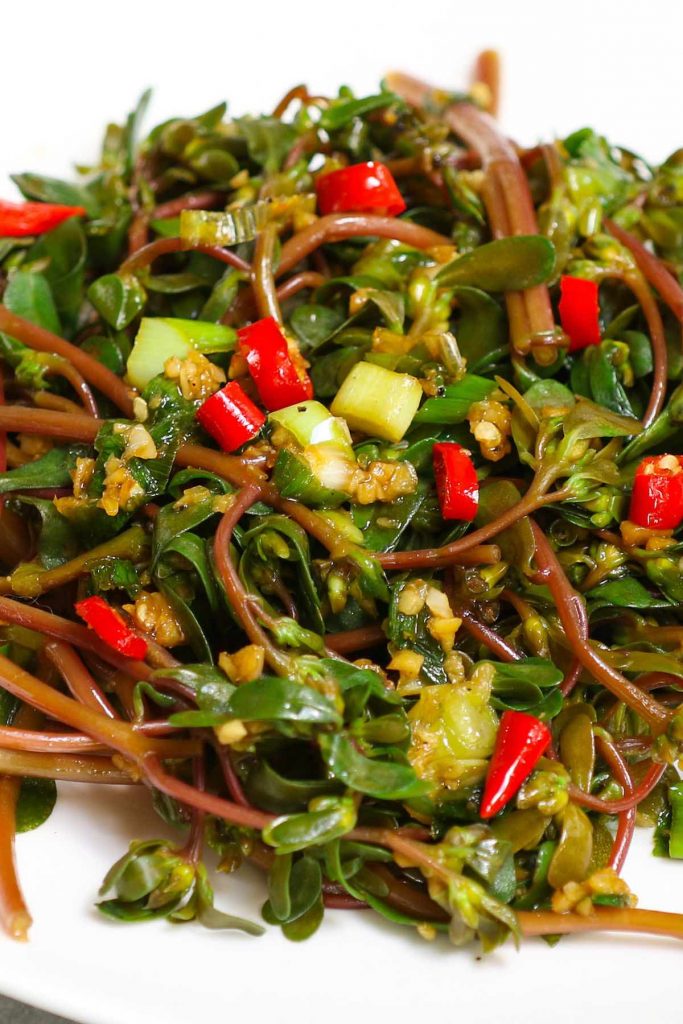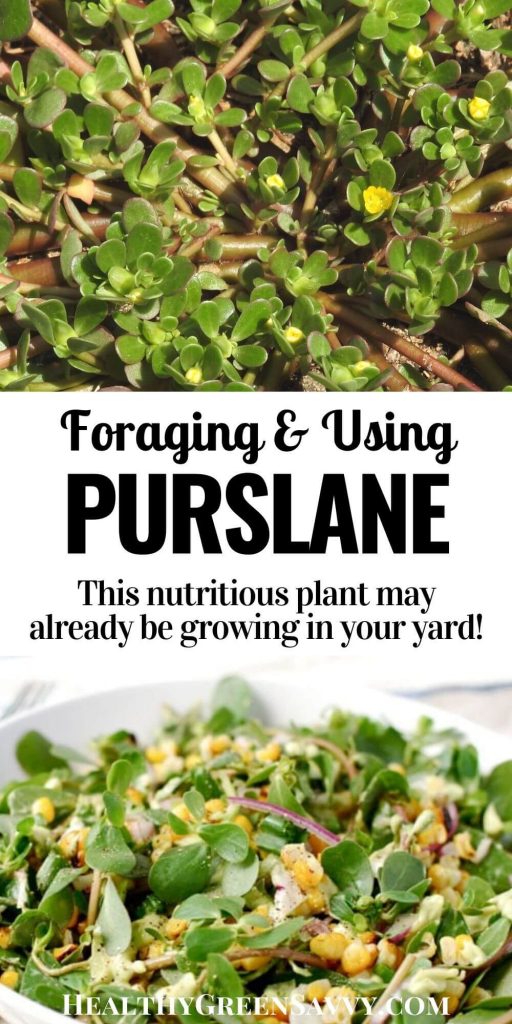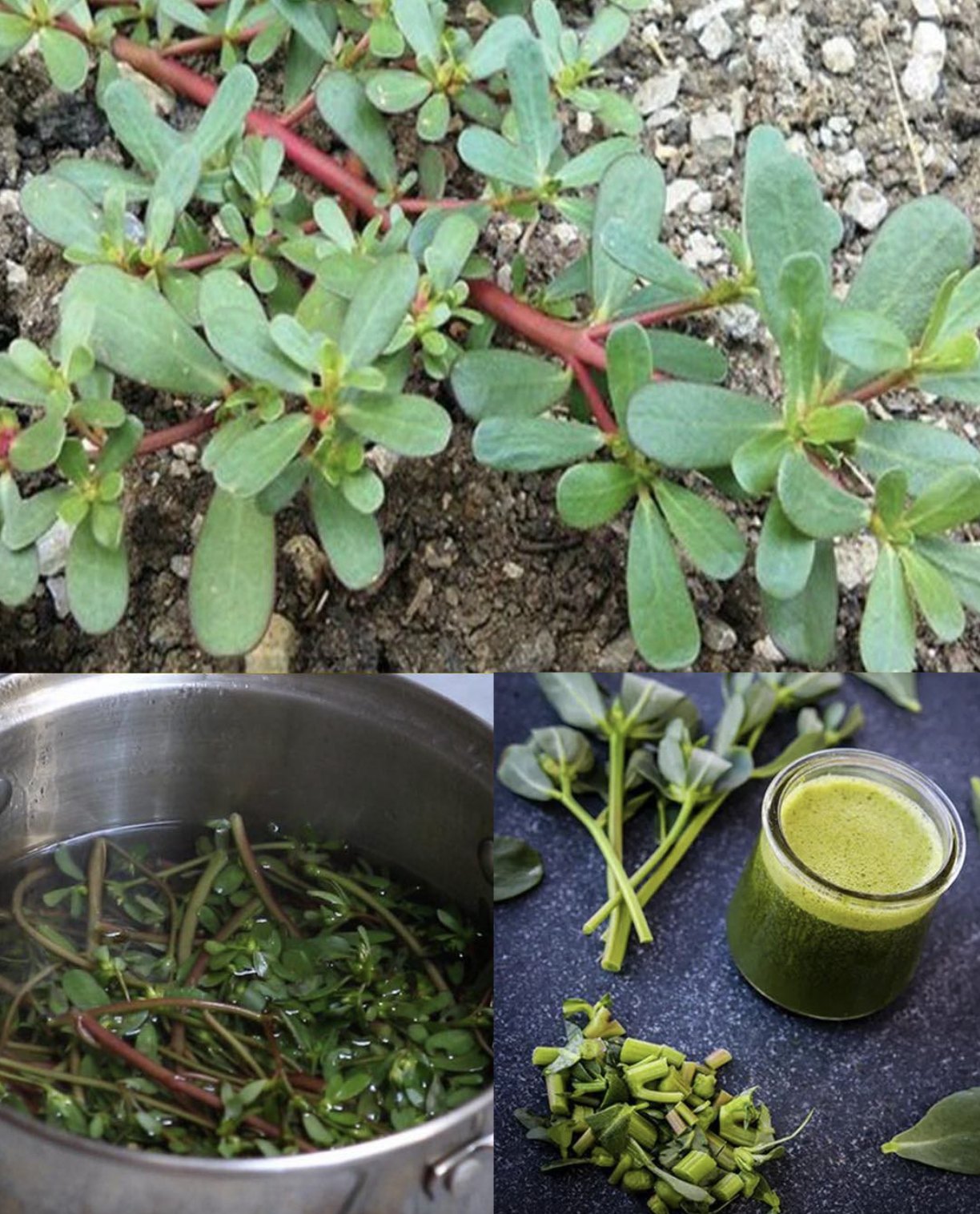
The Mighty Purslane: A Nutritional Powerhouse and Culinary Delight
In the vast and often overlooked world of edible plants, purslane (Portulaca oleracea) stands out as a true nutritional powerhouse. Often dismissed as a common weed, this succulent, leafy green boasts an impressive array of health benefits, making it a valuable addition to any diet. Beyond its medicinal properties, purslane also offers a unique, slightly tart and peppery flavor that can elevate a variety of culinary creations. This article will delve into the remarkable health benefits of purslane and explore delicious and accessible recipes that showcase its versatility.
A Nutritional Profile That Impresses
Purslane is a treasure trove of essential vitamins, minerals, and antioxidants. Its most notable nutritional contribution is its exceptionally high concentration of omega-3 fatty acids, particularly alpha-linolenic acid (ALA). In fact, purslane contains more omega-3s than many commonly consumed fish, making it an excellent plant-based source for those seeking to boost their intake of these vital fats. ALA is crucial for heart health, reducing inflammation, and supporting brain function.

Beyond omega-3s, purslane is rich in:
- Vitamins: A significant source of Vitamin A, C, and E, as well as several B vitamins. Vitamin A is vital for vision and immune function, Vitamin C is a potent antioxidant and supports collagen production, and Vitamin E is another powerful antioxidant that protects cells from damage.
- Minerals: Purslane provides essential minerals like potassium, magnesium, calcium, and iron. Potassium helps regulate blood pressure, magnesium plays a role in over 300 bodily processes, calcium is crucial for bone health, and iron is essential for oxygen transport.
- Antioxidants: Its vibrant green leaves are packed with antioxidants, including beta-carotene, glutathione, and flavonoids. These compounds help combat oxidative stress, which is linked to chronic diseases and aging.
- Fiber: Purslane is a good source of dietary fiber, promoting digestive health, aiding in blood sugar control, and contributing to feelings of fullness.
Unveiling the Health Benefits of Purslane

The remarkable nutritional composition of purslane translates into a wide range of health benefits:
-
Heart Health Champion: The high omega-3 fatty acid content in purslane is a significant boon for cardiovascular health. ALA has been shown to help lower blood pressure, reduce LDL (bad) cholesterol levels, and decrease the risk of blood clots. Its potassium content further aids in blood pressure regulation.
-
Anti-Inflammatory Powerhouse: Chronic inflammation is a root cause of many diseases, including arthritis, heart disease, and certain cancers. The omega-3s and antioxidants in purslane work synergistically to combat inflammation throughout the body.
-
Blood Sugar Regulation: Studies suggest that purslane may help improve insulin sensitivity and lower blood glucose levels. This makes it a potentially beneficial food for individuals managing diabetes or aiming to prevent it. The fiber content also contributes to slower sugar absorption.
-
Digestive Wellness: The dietary fiber in purslane promotes regular bowel movements and can help prevent constipation. It also acts as a prebiotic, feeding beneficial gut bacteria, which is crucial for overall digestive health and immune function.
-
Bone Strength: Purslane is a good source of calcium, a mineral essential for building and maintaining strong bones. Adequate calcium intake is vital for preventing osteoporosis, particularly as we age.
-
Skin Health and Anti-Aging: The antioxidants, particularly Vitamin E and beta-carotene, in purslane help protect skin cells from damage caused by free radicals, which contribute to premature aging. These nutrients can promote a healthier, more youthful complexion.
-
Immune System Support: The vitamins and antioxidants present in purslane play a vital role in bolstering the immune system, helping the body defend against infections and illnesses.
-
Eye Health: Vitamin A, in the form of beta-carotene, is crucial for good vision and can help protect against age-related macular degeneration.
-
Potential Anticancer Properties: While more research is needed, some studies have indicated that certain compounds in purslane may possess anticancer properties, inhibiting the growth of cancer cells.
Culinary Versatility: More Than Just a Weed
Despite its humble origins, purslane is a surprisingly versatile ingredient in the kitchen. Its succulent leaves and stems offer a pleasant, slightly tart, and lemony flavor with a hint of peppery spice. It can be enjoyed raw or cooked, adding a unique dimension to various dishes.
Tips for Sourcing and Preparing Purslane:
- Foraging: If you’re comfortable with foraging, ensure you correctly identify purslane and harvest it from areas free of pesticides and pollution.
- Gardening: Purslane is easy to grow in most climates and can even thrive in containers.
- Grocery Stores/Farmers Markets: Increasingly, purslane is becoming available in health food stores, farmers’ markets, and even some conventional supermarkets.
- Washing: Always wash purslane thoroughly before use to remove any dirt or debris.
- Preparation: The leaves and tender stems are edible. Thicker stems can be removed if desired, but they are also edible.
Exploring Purslane Recipes: A Culinary Journey
Here’s a selection of recipes that highlight the deliciousness and adaptability of purslane:
Recipe List: Delicious Purslane Creations
1. Simple Purslane Salad with Lemon Vinaigrette
- Description: A refreshing and vibrant salad showcasing the fresh, tangy flavor of raw purslane.
- Ingredients:
- 2 cups fresh purslane leaves and tender stems, washed and dried
- 1/2 cup cherry tomatoes, halved
- 1/4 cup thinly sliced red onion
- 1/4 cup crumbled feta cheese (optional)
- For the Vinaigrette:
- 3 tablespoons extra virgin olive oil
- 1 tablespoon fresh lemon juice
- 1 teaspoon Dijon mustard
- Salt and freshly ground black pepper to taste
- Instructions:
- In a large bowl, combine the purslane, cherry tomatoes, and red onion.
- In a small bowl, whisk together the olive oil, lemon juice, Dijon mustard, salt, and pepper until well combined.
- Pour the vinaigrette over the purslane mixture and toss gently to coat.
- If using, sprinkle with feta cheese. Serve immediately.
2. Sautéed Purslane with Garlic and Chili Flakes
- Description: A quick and flavorful side dish that brings out the subtle peppery notes of purslane when lightly cooked.
- Ingredients:
- 2 cups fresh purslane leaves and tender stems, washed and dried
- 1 tablespoon olive oil or butter
- 2 cloves garlic, minced
- 1/4 teaspoon red pepper flakes (or to taste)
- Salt to taste
- Instructions:
- Heat olive oil or butter in a skillet over medium heat.
- Add minced garlic and red pepper flakes and sauté for about 30 seconds until fragrant, being careful not to burn the garlic.
- Add the purslane to the skillet. Sauté for 2-3 minutes, or until the purslane is just wilted and tender.
- Season with salt to taste. Serve hot as a side dish.
3. Purslane and Yogurt Dip/Spread
- Description: A creamy and tangy dip or spread, perfect for crackers, bread, or as a vegetable dip.
- Ingredients:
- 1 cup fresh purslane leaves, finely chopped
- 1 cup plain Greek yogurt
- 1 clove garlic, minced
- 1 tablespoon fresh dill, chopped (optional)
- 1 tablespoon fresh lemon juice
- Salt and freshly ground black pepper to taste
- Instructions:
- In a medium bowl, combine the finely chopped purslane, Greek yogurt, minced garlic, dill (if using), and lemon juice.
- Stir well to combine all ingredients.
- Season with salt and pepper to taste.
- For best flavor, let the dip chill in the refrigerator for at least 30 minutes before serving.
4. Purslane Pesto
- Description: A vibrant and nutrient-dense alternative to traditional basil pesto.
- Ingredients:
- 2 cups fresh purslane leaves and tender stems, washed and dried
- 1/4 cup toasted pine nuts or walnuts
- 1/4 cup grated Parmesan cheese
- 1 clove garlic
- 1/3 cup extra virgin olive oil (or more, to reach desired consistency)
- Salt and freshly ground black pepper to taste
- Instructions:
- In a food processor, combine the purslane, toasted nuts, Parmesan cheese, and garlic.
- Pulse until the ingredients are roughly chopped.
- With the food processor running, slowly drizzle in the olive oil until the pesto reaches your desired consistency.
- Season with salt and pepper to taste.
- Use immediately on pasta, sandwiches, or as a dip. Store any leftover pesto in an airtight container in the refrigerator, topped with a thin layer of olive oil.
5. Purslane and Lentil Soup
- Description: A hearty and nourishing soup packed with fiber and plant-based protein, with purslane adding a fresh, slightly tart counterpoint.
- Ingredients:
- 1 tablespoon olive oil
- 1 medium onion, chopped
- 2 carrots, chopped
- 2 celery stalks, chopped
- 2 cloves garlic, minced
- 1 teaspoon dried thyme
- 1 cup brown or green lentils, rinsed
- 6 cups vegetable broth
- 1 cup fresh purslane leaves and tender stems, roughly chopped
- Salt and freshly ground black pepper to taste
- Fresh parsley, chopped, for garnish
- Instructions:
- Heat olive oil in a large pot or Dutch oven over medium heat. Add the onion, carrots, and celery and cook until softened, about 5-7 minutes.
- Add the minced garlic and thyme and cook for another minute until fragrant.
- Stir in the rinsed lentils and vegetable broth. Bring to a boil, then reduce heat, cover, and simmer for 25-30 minutes, or until lentils are tender.
- Stir in the chopped purslane and cook for another 2-3 minutes until just wilted.
- Season with salt and pepper to taste.
- Serve hot, garnished with fresh parsley.
Conclusion
Purslane, once relegated to the edges of our gardens and plates, deserves a prominent place in our diets. Its impressive nutritional profile, packed with omega-3 fatty acids, vitamins, minerals, and antioxidants, offers a wealth of health benefits, from promoting heart health and reducing inflammation to aiding digestion and supporting bone strength. Furthermore, its unique flavor and versatile nature make it a delightful addition to a wide range of culinary creations. So, the next time you spot this unassuming green, don’t dismiss it as a weed – embrace it as the nutritional powerhouse and culinary gem that it truly is. Experiment with the recipes above and discover the mighty purslane for yourself!


